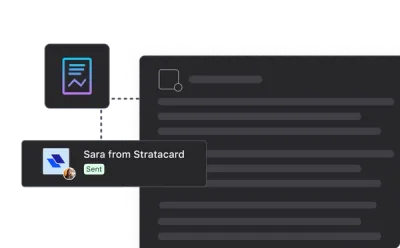
If you are a CEO or other company leader, I have a challenge for you: spend the next 8 weeks writing Friday notes to your team.
You don’t have to send them on Fridays, and they don’t actually have to be written—I’ve seen video updates work very well, too—but you do have to send one to all of your employees, every week, for the next 8 weeks.
If you haven’t done this kind of thing before, I guarantee you’ll be pleased with the results. Ben Horowitz wrote that “perhaps the CEO’s most important operational responsibility is designing and implementing the communication architecture for her company.”
Put another way, the CEO sets the tone for company communication. If you communicate intentionally, openly, and predictably, odds are the rest of your team will, too.

What’s in a note?
A Friday Note can be just that: a note. It doesn’t need to include a in-depth report on company progress or deep philosophical insight. In fact, I’d argue an approach like that could be counter-productive. Instead, share what’s at the top of your mind for the week and why, plus some words of encouragement or additional thoughts. What are you excited about? Where would you like to see improvement? What have you been reading lately?
If you’re sending the note via email, keep it under a page. If it’s a video, two minutes or less. Your note should be easy to digest. If you have additional thoughts, save them for the following week.
Most importantly, take a tone that is as personal as you’re comfortable with. Your team likely gets enough official communication from you and other org leaders, so something more conversational will be refreshing.
What you’ll get in return
It’s easy to forget that with the title of CEO comes a degree of unapproachability. The larger and older your company, the more this is true. A weekly note to the entire team, presented without much varnish, helps you connect with your employees on a more human level than they may be used to.
In a previous role, I worked with the CEO to compose Friday notes for the team’s ~120 employees. He got responses every week. Some were straightforward, to the tune of “thanks for writing this!” but others offered more, like an employee’s thoughts on the subject at hand, or even questions or comments about unrelated matters. Either way, the note started a dialogue that wouldn’t have happened otherwise.
Finally, a weekly note gives you a chance to evangelize your vision. Your team may have heard it at an annual All-Hands or in a quarterly call, but supporting that vision with regular reminders is a great way to ensure that everyone keeps working toward it.
If you need help getting started, we have a great weekly note template in our resources section. Otherwise, just give it a shot this week and see what happens. I promise it’ll be worth your time.




